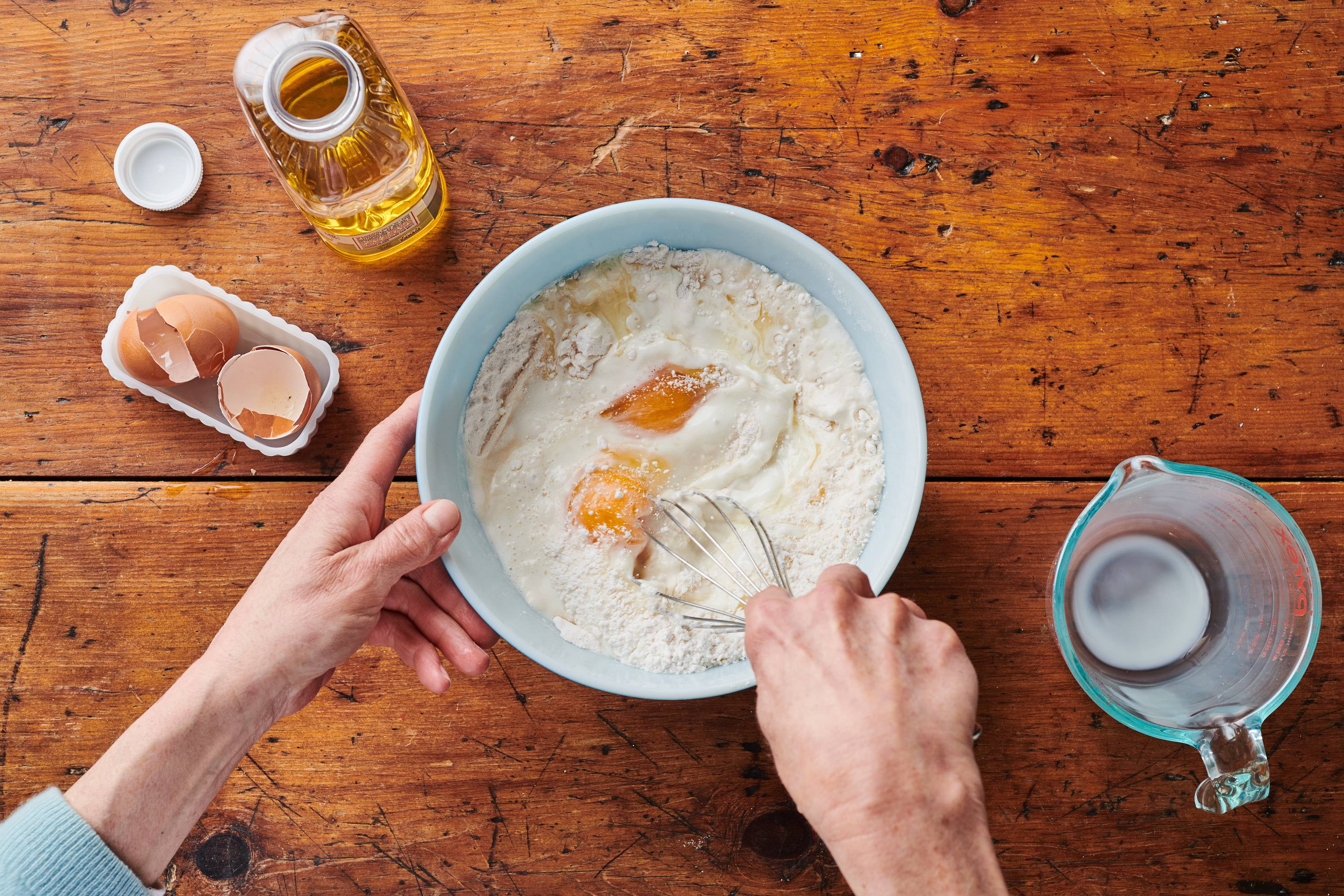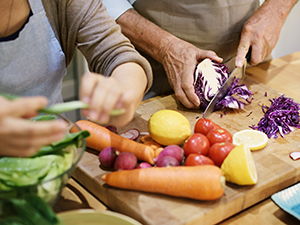
You should be able make a simple, but effective, checklist of your cooking skills for children. These skills can be used to develop creative recipes or ensure that the kitchen is safe. These tips will help you instill these valuable skills in your children. Here is a sample checklist.
Check out these essential culinary skills
A strong culinary education is not enough. Aspiring chefs must also be able to cook properly. These skills include understanding how to prepare food, determine freshness, and convert standard recipes into larger batches. The chef should be able to manage time and have a keen sense for smell and taste. Furthermore, they should be capable of properly handling knives and food equipment.
Sauteing can be used to cook a wide variety of foods. Sauteeing is a great way to make light sauteed veggies and shrimp with garlic butter. Braising, the oldest form of cooking, is usually done over an open fire. Although it is not a very advanced skill, it is still extremely useful. The first step to becoming a skilled cook is learning how to boil water. It is important to be able to use a knife safely.
Creative recipes
Creative recipes are essential to your success when cooking a meal. Not only do they showcase your creativity, they also showcase your skills. Creative thinking, otherwise known as divergent thinking, allows you to think outside of the box to create new ideas. This is a crucial skill in a cooking career as it allows for you to experiment with different cooking techniques and flavours and impress your customers. You can experiment with new flavors and impress your employer by using your creative mind. You can experiment with different flavors and come up creative themes for your meals. Find creative ways to increase your creativity through brainstorming and research.

Another problem is the inconsistent way they define cooking skills. While they disagree about which one is most important, the authors agree that the definition of the skill needs to change. The authors argue that the definitions of skills should evolve from the "Golden Age", when basic cooking skills were not sufficient. We must support the advancement of these skills in order to ensure that food has a bright future.
Create a safe and secure environment in your kitchen
Developing a safe environment in a commercial kitchen is imperative for the health of your staff. The kitchen can be a potentially dangerous place with electrical appliances, bacteria, and an open fire in the oven. First, it is crucial to plan the cleanliness of your kitchen and install safety equipment. It is important to ensure children are not left unattended in the kitchen. A safety plan and proper training can help to prevent accidents.
All kitchen staff must be trained in fire-safety and fire-resistance. Local fire departments can provide training in fire safety. Kitchen staff should know where fire blankets and fire extinguishers are, how to operate them, and how to manually initiate the fire-suppression system. Employees should be trained in CPR, first aid and other skills as necessary. When possible, kitchens should have non-slip flooring and mats.
Food safety hazards:
Identifying food safety hazards is an essential part of your overall safety program, whether you are preparing a meal for your family or catering for a special occasion. Identifying potential hazards is an important part of food safety, as it can prevent outbreaks of food poisoning and product recalls. Failure to do this can result in regulatory action and brand damage. Codex HACCP compliance is crucial for food businesses, and identifying hazards is a fundamental requirement.

There are many potential physical hazards that can inflict injury on humans. They can be from people, plants, packaging, or both. Different physical hazards are more likely to cause disease or injury than others. These hazards aren't necessarily dangerous but must be identified and eradicated before they can cause damage. To find potential hazards, you must identify the source and then determine how to minimize it. By observing the product, you can identify the source of risk.
FAQ
Is it possible to be self-taught?
Self-taught cooking is possible! The joy of cooking is something that everybody enjoys doing, no matter their skill level. Learn how to cook at home. You can start small by making spaghetti sauce for dinner or pancakes for breakfast. It is important to experiment with new recipes to learn how to cook. You might make a few errors along the way.
Learning to cook takes anywhere from a couple of hours to several weeks, depending on what type of skill level you are looking for. It's important to remember that cooking isn't just about following recipes. There are so many ways to prepare food.
Which is the best method to store leftovers?
Tupperware containers are great for storing leftovers. These containers preserve food freshness and stop odors from developing. These containers keep food warm for longer periods of time. Remaining food can be frozen in freezer bag. To prevent air from escaping, freeze food in a bag. Once the food is frozen place it in an airtight container, such as a zip lock bag.
How do I get motivated to cook?
Sharing food with friends and family is a great way to have fun cooking. However, cooking for yourself is much easier than cooking for others. Try making something new if your goal is to become more motivated to cook. This way, you will learn about new ingredients and techniques. To expand your culinary skills, you can also make use of recipes from other cultures.
Can I learn how to cook together with my children?
Yes! Children love to help in the kitchen. It's a fun activity which teaches children responsibility and teamwork. From washing vegetables to chopping onion, children can help. Your children will be more comfortable helping you cook if you teach them safe techniques for handling knives.
How do I get hired to cook?
You can get a job as a cook through word of mouth. A friend or family member might know of an open restaurant that is in desperate need of staff. Also, restaurants often advertise openings on bulletin boards and websites.
How much does it cost for you to learn culinary arts?
There are many factors that influence the cost of learning culinary arts. A four year degree is typically around $40,000. A two-year associate degree, on the other hand may cost less than $5,000. Tuition rates vary depending on what program you choose. Public institutions are more expensive than private institutions.
How long does it take to learn to cook? How much time do I need?
It depends on what kind of skill level you are trying to achieve. Some people can pick up basic cooking techniques within a day or two. Others may take months or years to master the basics of cooking.
The time taken to learn to cook will depend on who you ask. Someone who has never been to the kitchen before might need more time than someone who does it regularly. Also, certain types of cooking require more experience than others. Baking requires more knowledge than frying.
If you want to learn how quickly you can cook, you should focus on learning a specific technique. You can then move on to the next technique once you have mastered it. It doesn't matter how long it takes to master a particular technique. Just keep practicing and enjoy the process.
Statistics
- You'll be amazed that over 90% of CIA students receive scholarships and grants to finish their culinary studies. (ischoolconnect.com)
- According to the BLS, chefs earn $58,740 a year. (learnhowtobecome.org)
- The median pay for a chef or head cook is $53,380 per year or $25.66/hour, according to the U.S. Bureau of Labor Statistics (BLS). (learnhowtobecome.org)
External Links
How To
How to make the perfect omelet
Omelets are one of my favorite foods to eat at breakfast. How can you make them perfectly? There are many recipes and methods I tried, but none worked. So I am sharing some tips and tricks today to help you make fluffy, delicious omelets every morning.
Before we start making omelets, let's remember that eggs are temperamental. Eggs must be purchased fresh, preferably organic, and kept chilled until ready for cooking. If you don't keep them cold enough, the whites won't form properly, and the yolks will break down too much and become runny. This can make your omelets look bizarrely colored. If you want to make omelets right away, it's best not to use eggs that are too cold.
Another tip is to separate the egg before adding it to the pan. It is important not to allow any white to mix with the yolk as this could lead to the omelet becoming curdled.
If you add the egg directly onto the stovetop, you might end up burning the bottom part of the egg, which would ruin the texture of your omelet. Instead, heat the egg for 10 seconds in the microwave before placing it in the pan. The microwave heat cooks your egg just right, without it becoming too soft.
Next, let’s talk about mixing the egg. When you mix eggs together, you want to beat them well. To do this, grab the bowl of the mixer and turn it upside down. Then, vigorously shake the bowl. By doing this, the egg is thoroughly mixed with the air in the bowl.
Now comes the fun part: adding the milk to your mixture. Fold the eggs in the milk mixture by first pouring half of it into the egg whites. If you still see streaks of eggs, don't worry. These streaks will disappear once the omelet has been turned over.
After you have folded the eggs, heat the oil in a pan over medium heat. Once the oil has started to sizzle, turn the heat down to low. Add 1/4 cup butter to the oil and swirl it around to coat all sides of the pan. Carefully open the pan's lid and add salt to the pan. Salt will prevent the omelet sticking to the pan.
Once the omelet has formed, cover the pan again and wait for the top side to set completely. Flip the omelet with a spatula, or flip it upside down. Cook the other half for another minute. Serve immediately after removing the omelet from its pan.
This recipe works best when you use whole milk.